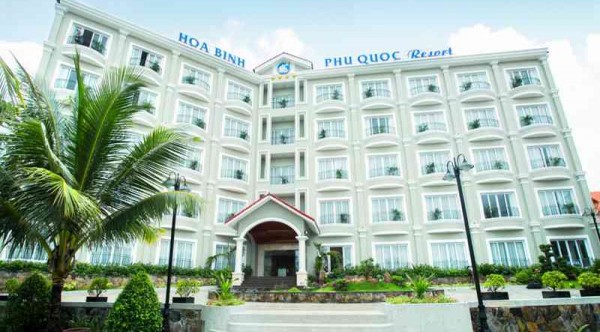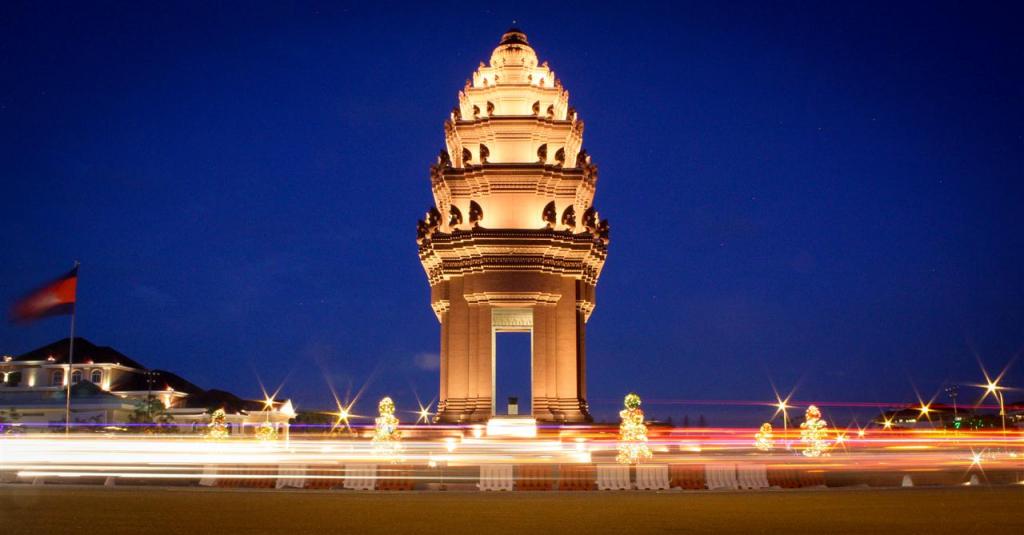
Phnom Penh Cambodia

Phnom Penh Cambodia

Phnom Penh Cambodia is the capital of Cambodia and is laid out north to south along the confluence of the Tonle Sap and Mekong Rivers. Phnom Penh is home to a population of about 2.5 million, and is a vibrant, bustling and ethnically diverse city with a mixed population of Khmer, Chinese and Vietnamese. The French left a legacy of crumbling colonial architecture, some of which has been tastefully renovated. Sidewalk restaurants have sprung up all over town, especially around the recently developed riverfront area. There is also a more spiritual side to Phnom Penh with a large number of Wats (temples), and you can often see monks in saffron robes padding along the streets seeking alms. Phnom Penh is divided into three sections – the north, an attractive residential area; the south or the French part of the city with its ministries, banks and colonial houses; and the centre or the heart with its narrow lanes, markets, foods stalls and shops.
When the best time to visit Phnom Penh
The best time to visit is in the winter, between December and January. During this time, the temperature is cooler but it is still hot and tropical.30-32oC is quite common; but it’s less humid so more confortable; especial in the evenings.
Getting There & Away
Air
Many international air services run to/from Phnom. Domestically, Cambodia Angkor Air flies four to six times daily to Siem Reap and three times a week to Sihanoukville.
- Vietnam Airlines
- Air Asia
- Bangkok Airways
- Jetstar Asia
Please contact us to book flight ticket.
Border Crossings
Getting to the Border The original Bavet/Moc Bai land crossing between Vietnam and Cambodia has seen steady traffic for two decades. The easiest way to get to Ho Chi Minh City (Saigon) is to catch an international bus (seven hours) from Phnom Penh. We recommend taking a Vietnamese company, such as Sapaco, as it will speed entry into Vietnam in the event of long lines at the border. There are several companies making this trip.
Car & Motorbike
Exploring Phnom Penh and the surrounding areas on a motorbike is a very liberating experience if you are used to chaotic traffic conditions.
There are numerous motorbike hire places around town. A 100cc Honda costs US$4 to US$7 per day and 250cc dirt bikes run from US$12 to US$30 per day.
Car hire is available through travel agencies, guesthouses and hotels in Phnom Penh. Everything from cars (from US$25) to 4WDs (from US$60) is available for travelling around the city, but prices rise if you venture beyond.
In addition to the following popular motorcycle rental shops, Palm Tours rents motorbikes for US$5 to US$7. The Bike Shop has excellent 250cc to 600cc bikes for US$30 to US$55 per day, and smaller motorbikes for US$6 per day.
Bus
All major towns in Cambodia are accessible by air-conditioned bus from Phnom Penh.
- Capital Tour
- GST
- Mekong Express
- Phnom Penh Sorya Transport
Mekong bus route is also to Ho Chi Minh City.
All of tickets can be booked by our office. Please contact us to book them.
Boat
Fast boats up the Tonlé Sap to Siem Reap and down the Mekong to Chau Doc, Vietnam.
Several companies have daily services departing at 7am and usually take it in turns to make the run. The boats to Siem Reap run from roughly late July to late March (water levels are too low at other times).
- Blue Cruiser
- Hang Chau
Taxi
Taxis are cheap at 3000r per kilometer but don’t expect to flag one down on the street. Call Global Meter Taxi, Choice Taxi, and Taxi Vantha for a pickup.
Bicycle
It is possible to hire bicycles at some of the guesthouses around town for about US$1 to US$2 a day, but take a look at the chaotic traffic conditions before venturing forth. Once you get used to the anarchy, it can be a fun way to get around.
Remork-moto
Better known as tuk-tuks, remorks are motorbikes with carriages and are the main way of getting around Phnom Penh for tourists. Average fares are about double those of moto – US$1.50 for short rides around the center, US$2 to US$2.50 for slightly longer trips.
Cyclo
Travelling by cyclo (pedicab) is a more relaxing way to see the sights in the Centre of town, although they don’t work well for long distances. For a day of sightseeing, expect to pay around US$10 – find one on your own or negotiate a tour through the Cyclo Centre. For short one-way jaunts costs are similar to motor fares. You won’t see many cyclos on the road late at night.
Sights & Activities
National Museum of Cambodia
Located just north of the Royal Palace, the National Museum of Cambodia is housed in a graceful terracotta structure of traditional design (built 1917–20), with an inviting courtyard garden. The museum is home to the world’s finest collection of Khmer sculpture – a millennium’s worth and more of masterful Khmer design.
The museum comprises four pavilions, facing the pretty garden.
Royal Palace
With its classic Khmer roofs and ornate gilding, the Royal Palace dominates the diminutive skyline of Phnom Penh. It is a striking structure near the riverfront, bearing a remarkable likeness to its counterpart in Bangkok.
Being the official residence of King Sihamoni, parts of the massive palace compound are closed to the public. Visitors are only allowed to visit the throne hall and a clutch of buildings surrounding it. Adjacent to the palace, the Silver Pagoda complex is also open to the public.
Visitors need to wear shorts that reach to the knee, and T-shirts or blouses that reach to the elbow; otherwise they will have to rent an appropriate covering. The palace gets very busy on Sundays when countryside Khmers come to pay their respects, but this can be a fun way to experience the place, thronging with locals.
Tuol Sleng Museum
In 1975, Tuol Svay Prey High School was taken over by Pol Pot’s security forces and turned into a prison known as Security Prison 21. This soon became the largest centre of detention and torture in the country. Between 1975 and 1978 more than 17,000 people held at S-21 were taken to the killing fields of Choeung Ek.
S-21 has been turned into the Tuol Sleng Museum, which serves as a testament to the crimes of the Khmer Rouge.
Behind many of the displays at Tuol Sleng is the Documentation Center of Cambodia . DC-Cam was established in 1995 through Yale University’s Cambodian Genocide Program to research and document the crimes of the Khmer Rouge. It became an independent organisation in 1997 and researchers have spent years translating confessions and paperwork from Tuol Sleng, mapping mass graves, and preserving evidence of Khmer Rouge crimes.
Silver Pagoda Complex
From the palace compound you enter the Silver Pagoda complex through its north gate. The Silver Pagoda was so named in honour of the floor, which is covered with more than 5000 silver tiles weighing 1kg each, adding up to five tonnes of gleaming silver. You can sneak a peek at some of the 5000 tiles near the entrance – most are covered for their protection. It is also known as Wat Preah Keo (Pagoda of the Emerald Buddha). It was originally constructed of wood in 1892 during the rule of King Norodom, who was apparently inspired by Bangkok’s Wat Phra Keo, and was rebuilt in 1962.
Wat Phnom
Set on top of a 27m-high tree-covered knoll, Wat Phnom is on the only ‘hill’ in town. According to legend, the first pagoda on this site was erected in 1373 to house four statues of Buddha deposited here by the waters of the Mekong River and discovered by Madame Penh. The main entrance to Wat Phnom is via the grand eastern staircase, which is guarded by lions and naga (mythical serpent) balustrades.
Today, many people come here to pray for good luck and success in school exams or business affairs. When a wish is granted, the faithful return to deliver on the offering promised, such as a garland of jasmine flowers or a bunch of bananas, of which the spirits are said to be especially fond.
French Embassy
Located at the northern end of Monivong Blvd, the French embassy played a significant role in the dramas that unfolded after the fall of Phnom Penh on 17 April 1975. About 800 foreigners and 600 Cambodians took refuge in the embassy. Within 48 hours, the Khmer Rouge informed the French vice-consul that the new government did not recognize diplomatic privileges and that if all the Cambodians in the compound were not handed over, the lives of the foreigners inside would also be forfeited.
Cambodian women married to foreigners could stay; Cambodian men married to foreign women could not. Foreigners wept as servants, colleagues, friends, lovers and husbands were escorted out of the embassy gates. At the end of the month the foreigners were expelled from Cambodia by truck. Many of the Cambodians were never seen again. Today a high whitewashed wall surrounds the massive complex and the French have returned to Cambodia in a big way, promoting French language and culture in their former colony.
Eating
Karma Restaurant & Bar: 273c Sisowath Quay (The Riverside), Phnom Penh (Phone: 089 788 841)
Free Bird Bar and Grill: 69, Street 240, Phnom Penh (Phone: +855 23224712)
Sugar and Spice Friends Restaurant: St 178 (Opposite the National Museum), Phnom Penh
Khmer Saravan: 325 Sisowath Quay, Phnom Penh (Phone: 12 84 56 79)
Amok Restaurant & Café: Le Passage & Old Market, Siem Reap (Phone: 063 965 407)
| Country | cambodia |
|---|

